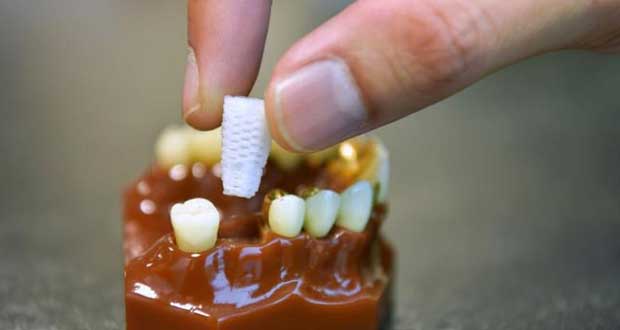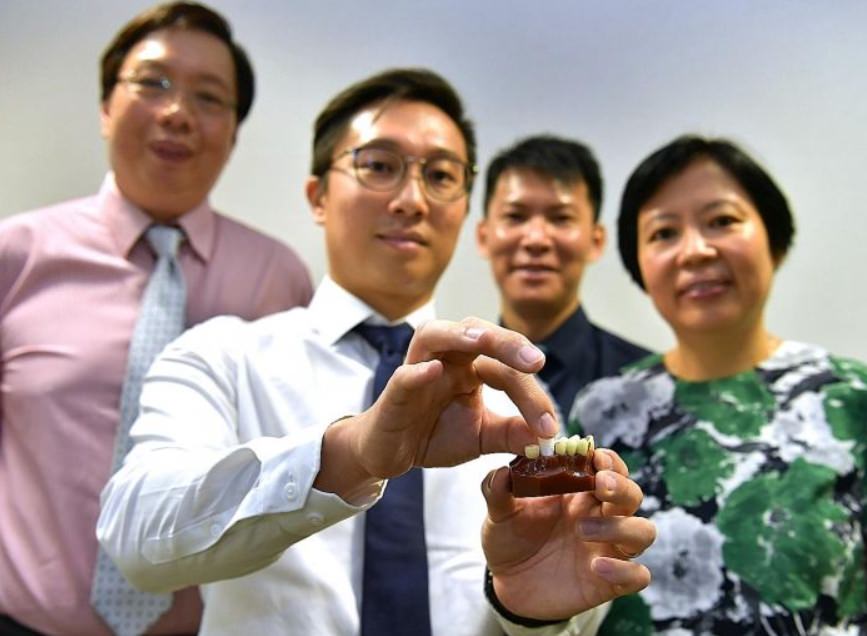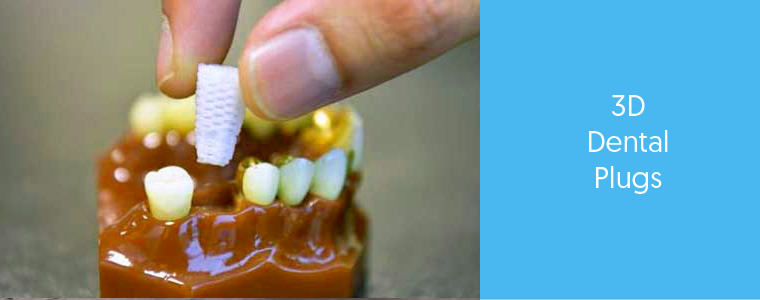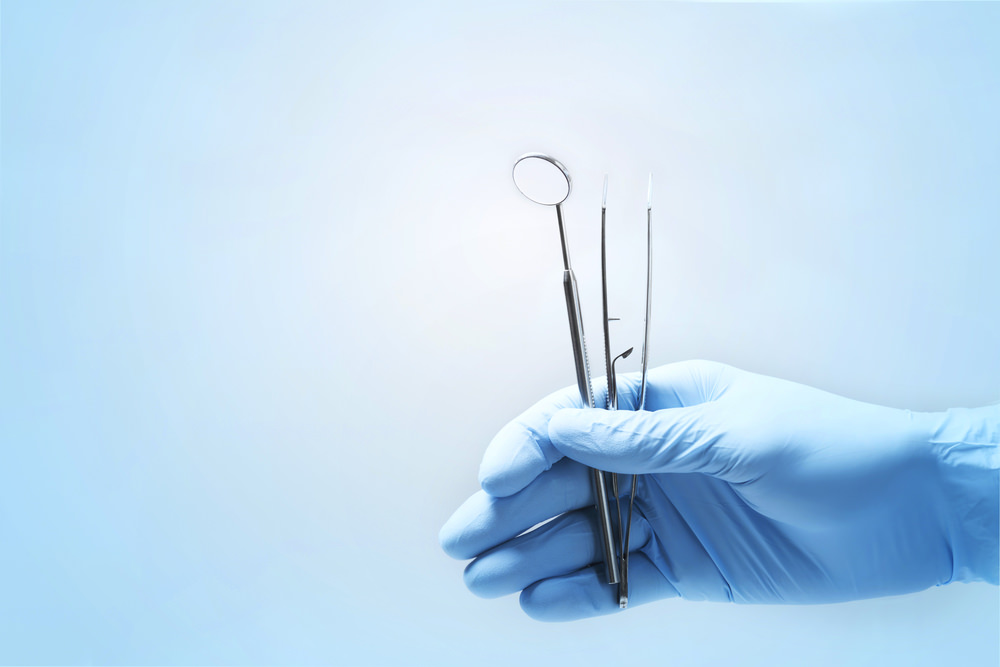New, Improved and Cheaper – 3D-Printed Dental Plugs
A new procedure known as a 3D Dental Plug has been recently developed by the National Dental Centre Singapore (NDCS) and is hoping to save you a lot of that time, money and pain.
Researchers at the National Dental Centre Singapore have developed an enhanced, bioresorbable 3D-printed dental plug – yes, that’s, right, printed!
Who would have ever thought the printer would help promote bone growth in our jaws and reduce the risk of bone resorption after tooth extraction!
So how exactly again, you ask?
Made from a composite material and printed in bulk, the 3D-Printed Dental Plugs can be placed into your extraction site immediately after tooth removal.
By doing so, it has increased your tooth bones bioactivity.
This reduces the 3-month waiting period currently required for your bone to grow in your tooth socket before your dental implant can be placed.
The shorter waiting period also means there is far less need for bone grafts.
The total outcome is less waiting time and less surgery, which equals a total of less pain and less money!!
What are 3D-Printed Dental Plugs?

Source ST PHOTOS: NG SOR LUAN
An enhanced, bioresorbable, 3D-printed dental plug.
It’s kind of hard to pronounce, and a little hard to understand just exactly how the treatment works, especially whereabouts in the process the 3D printer becomes into action!
I don’t blame you if you’re a little confused, so, sit down, relax, and let me break it down for you.
The dental plug is made by a company called Osteopore.
It is made from a composite material (similar to your white filling) but has been enhanced with tricalcium phosphate, to increases its bioactivity – or the effect it has on your bone.
This also reduces the time it takes for it to decompose.
What this means is that the length of time that you have to wait for your dental implant to be placed after a tooth extraction is shortened.
Instead of waiting 6 months, you may only be waiting up to 6 months.
How Does it Work So Well?
Well, the 3D-printed dental plugs are placed immediately into your extraction site after a tooth is removed.
This eliminates the need for any bone grafts.
You see, when a tooth is lost, resorption or shrinkage may occur in the bony ridge that supports it.
By inserting the dental plug into the tooth socket immediately after extraction it prevents the bone from being absorbed into your body.
It promotes bone growth so that the dental implant can be placed sooner rather than later.
The plug itself will gradually degrade over 12 months, so your own bone can fill in over time.
What are the Benefits of 3D-Printed Dental Plugs?
3D Printed Dental Plugs have a variety of benefits. Let’s break them down.
Higher success rates of dental implants
The long-term success of dental implants all depends on how well they are supported by the bony ridge in your jawbone.
Thus, prostheses that support dental implants are gaining in popularity as the most common treatment for tooth replacement.
This is due to the fact they provide a stable support base for the artificial teeth by fusing them to your jawbone.
Less need for bone grafts
After the removal of your tooth, the extraction site is normally left to heal naturally, as bone must grow back in the tooth socket.
This can leave you waiting up to 3 months. However, instead of healing in this time, shrinkage or resorption is often an issue.
If the tissue shrinks, this results in your jaw ridge becoming shorter and narrower.
If the resorption is serious – if too much bone is absorbed and broken down from your body – then surgery is often required to rebuild the bone before a dental implant can be placed.
This procedure is known as a bone graft. A bone graft surgery is complicated, expensive and invasive.
If you need a large graft, it is either surgically harvested from your own chin, jaw, skull or hip (known as an autograft).
If you need a small graft, you will receive a commercially produced animal-derived bone, from bovine or porcine.
Patients with religious restrictions can often not accept these types of bone grafts.
It’s a money saver!
You will save money, as the dental plugs are 3D-printed in bulk from synthetic materials.
With each plug thought to roughly cost between $100 and $400, and the procedure time halving from 12 months to only 6, you can see yourself saving up to $2000 on the procedure!
This is all from cheaper materials and fewer dental visits or the need for surgery.
It’s a time saver!
Currently, most patients that require dental implants must wait 3 months after their tooth extraction for their bone to grow in the tooth socket.
This is the waiting period required before the dental implant can even be placed.
This is because the alveolar (bony) ridge must be the correct height and width to provide a stable support base for the implant.
If bone grafts are required, recovery time ranges from 5 to 14 days.
After bone grafts, there are many post-operative complications that you must avoid such as pain, swelling, infection, non-take of the graft and resorption again.
Any of these can see you back in that Dental chair again!
Even if, after a bone graft, your healing process goes well, you generally have to wait about 6 months for the graft to fully heal before your dental implant can be placed.
It’s a pain saver!
If the enhanced dental plugs prove to work like a treat, you can not only benefit from a shorter treatment procedure but also a less painful process.
As the plugs are placed immediately after the extraction, the need for a bone graft may be totally avoided.
Now, that is so much more to smile about!!
Regarding the benefits of the dental plugs, the Researchers that are involved in the clinical trial have said;
“We are continually looking for ways to collaborate with bioengineers and the MedTech industry to co-develop innovative and value-based solutions that can be translated to better treatments and outcomes.
If successful, the bioresorbable 3D-printed dental plug will significantly improve the experience of patients who need dental implants,” commented Clinical Associate Professor Goh Bee Tin, Director, Research and Education, NDCS, who is leading the trial.

The Singapore team who created 3D Dental plugs: Source ST PHOTOS: NG SOR LUAN
“Osteopore International is pleased to collaborate with the strong clinical research teams of NDCS and SCRI to validate the clinical efficacy of our second-generation regenerative technologies in dental socket preservation.
These easy to use implants could save significant operative time for dental surgeons and deliver quality bone regeneration,” said Mr Goh Khoon Seng, Chief Executive Officer, Osteopore International.
“In this landmark research project where we are studying this new treatment option to our patients, the SCRI team is proud to work hand in hand with the clinical team from NDCS and the product manufacturing team from Osteopore to enable this study to be done at the highest quality and we hope this project will eventually translate to a better treatment option for our patients in the future,” said Associate Professor Teoh Yee Leong, Public Health Physician and CEO, Singapore Clinical Research Institute.
This information was obtained from SingHealth.
When will 3D-Dental Plugs be Available?
The National Dental Centre Singapore (NDCS), in partnership with the Singapore Clinical Research Institute (SCRI) and Osteopore, is doing a randomised controlled clinical trial to study and evaluate the use of these dental plugs, which is now open for participant recruitment.
The trial aims to recruit 138 patients by January 2020, with the aim to then launch the dental plugs the following year.
The purpose of the clinical trial is to;
- Assess the difference in the alveolar ridge resorption after tooth extraction between sockets that received the insertion of the dental plug, versus those that did not get a dental plug.
- Assess both the healing and inflammatory differences.
- Evaluate whether the enhanced dental plug improves bone density (as this may increase the overall stability of dental implants).
Still, Confused?
Watch this video, it will show you from start to finish just how the 3D-printed dental plugs aim to improve your dental implant experience!
Conclusion
An enhanced, bioresorbable, 3D-printed dental plug… it’s kind of hard to pronounce, it might have been a little hard at first to understand, but hopefully by now you know that the dental plug aims to improve the experience of patients who require dental implants.
They are a money saver, a time saver and a pain saver, and you can benefit from having one less surgery procedure, and a shorter treatment process.
With a higher rate of success and a hope to heal the extraction site rapidly, as if nothing ever happened in your mouth at all.
Now, isn’t that just jaw-dropping!!
By Dr. V
Created at October 17, 2019, Updated at January 25, 2025





